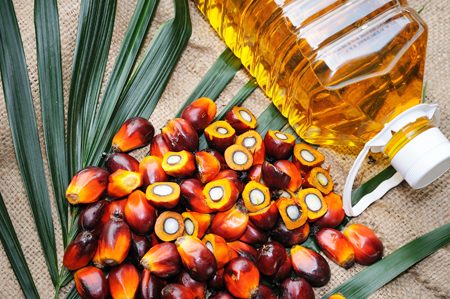Palm Oil Prices Ease, As Malaysian Output Jump Overshadows Stocks Number
Category: Oilseeds
 (Agrimoney) – Palm oil futures eased as data showing larger-than-expected Malaysian production of the vegetable oil, and a soft start to November for exports, overshadowed a figure showings inventories building more slowly than forecast.
(Agrimoney) – Palm oil futures eased as data showing larger-than-expected Malaysian production of the vegetable oil, and a soft start to November for exports, overshadowed a figure showings inventories building more slowly than forecast.
Palm oil output in Malaysia, the second-ranked producer of the vegetable oil, last month reached 2.01m tonnes, topping 2.0m tonnes for the first time in two years, the Malaysian Palm Oil Board said.
While notable expansion had been expected for a month which often sees a seasonal high in production, and after a September when holidays left plantations somewhat back up with fruit, the extent of the output growth, up 12.9% month on month, exceeded expectations of a 9.4% increase.
And it stole attention from a Malaysian figure for palm oil stocks which, while at a 21-month high of 2.19m tonnes, fell some 23,000 tonnes short of market forecasts.
‘The key point…’
“The key point this month is that crude palm oil production was stronger than anticipated, after two months of month on month falls,” said Ed Hugo at broker VSA Capital.
“This means in-country stocks remain above 2m tonnes for the second month in a row.”
Malaysian production prospects have been a key market talking point, for much of this year falling short of initial expectations.
However, it has been unclear whether this is down to long-term factors, such as extended damage to oil palm yields from drought, or issues such as labour shortages which could prove easier to resolve.
“I think many, although not all, the worries over Malaysian plantations may disappear after these figures,” a European oilseeds trader told Agrimoney.
‘Demand clearly tailed off’
Export data released by the board showed Malaysian shipments at 1.55m tonnes last month, up 2.0% month on month, and the highest since August 2016, although in line with market expectations.
Furthermore, after cargo surveyor data showed a strong start to October for shipments, up 18% in the first 10 days, the figure “does highlight a significant slow-down” as the month progressed, Mr Hugo said.
“Export demand clearly tailed off” after the mid-August holiday in China, and the Muslim Diwali holiday festival.
‘Neutral-to-bearish’
The slowdown in Malaysian palm oil exports extended into this month, with data from cargo surveyor ITS showing exports down 2.5% so far this month, while rival SGS put the rate of decline at 4.8%.
Mr Hugo said that “I would remain neutral-to-bearish on the near-term potential for crude palm oil prices, given November should be another fairly strong production month, the weaker export figure for the first 10 days of the month and the high stocks-to-usage ratio.”
However, he flagged hope for palm oil bulls in rising crude oil prices, which are a support for values palm oil given that it, like many other vegetable oils, is used largely in biodiesel manufacture.
Indeed, the premium of palm oil to gasoil has fallen below $100 a tonne, a threshold below which the vegetable oil is seen as economically viable as a fuel feedstock, without support from biodiesel mandates.
If the premium continued to fall, “we could see biodiesel increase its influence on the palm oil demand side of the story, which would of course be bullish for pricing”.
Palm oil vs soyoil
The European trader noted too a growing discount in palm oil prices, relative to those of rival vegetable oil palm oil.
While this could be explained in part by US clampdowns on biodiesel imports, necessitating more domestic production, “palm oil may look increasingly attractive for some users”.




